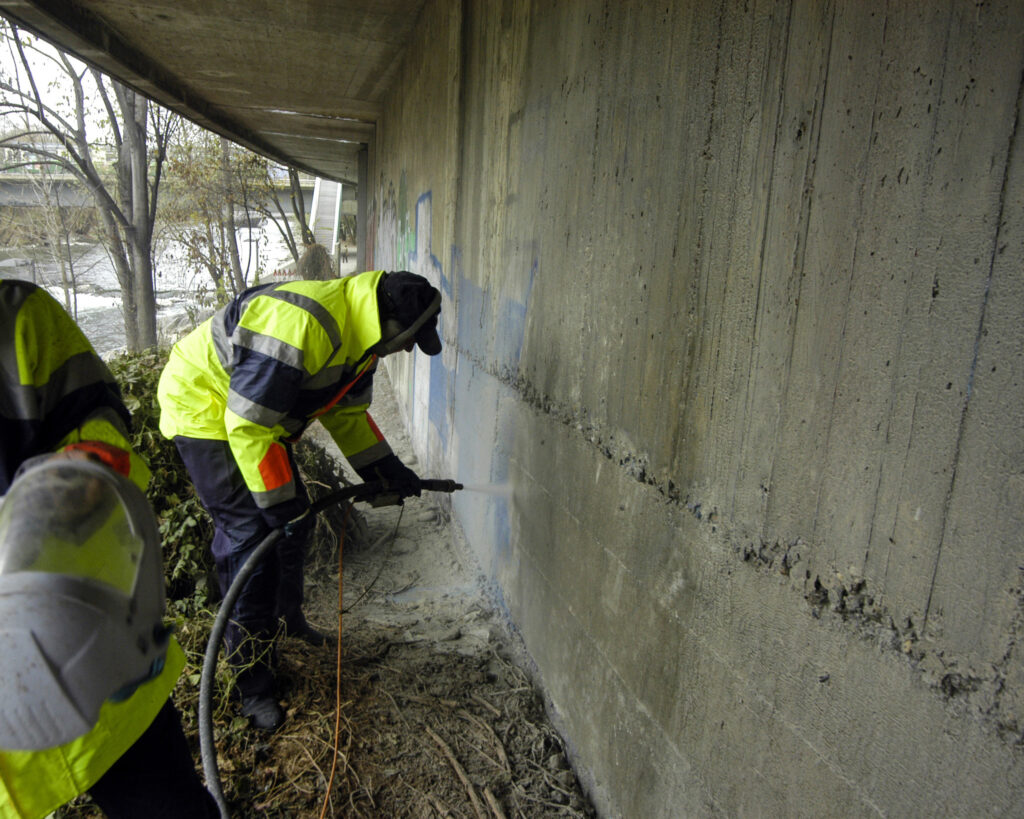Keeping your business in good condition is a top priority for every business owner. And yet—whether it be from accidental spills, regular wear, and tear, renovations, graffiti, or vandalism— thousands of businesses spend money every year to clean up their property. During the year 2020, several cities across America witnessed significant civil unrest and protests. The death of George Floyd ignited a flame of outrage that was difficult to quell, and, unfortunately, many cities suffered destruction to property as a result. In November of 2020, the city of Portland reportedly spent $65k to remove graffiti from business storefronts, walls, and property.
So you drive up one day and see graffiti damage or paint damage on your property. What are the best ways to deal with this, and who should you call?
Not only are sandblasting, hydro blasting, and pressure washing the choices, each one has its unique benefits depending on the surface you are trying to clean.
